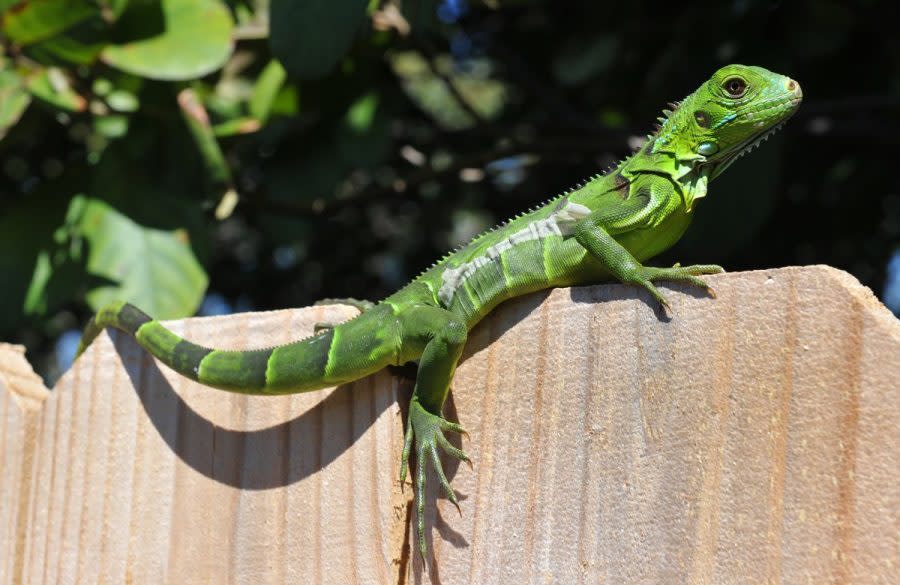When will frozen iguanas start falling from trees in Florida?

TAMPA, Fla. (WFLA) — Temperatures are starting to drop in Florida, and if you’ve been in South Florida during the winter months, you may see something else dropping once seasons change.
In northern states, trees shedding their leaves typically signifies fall is here and winter is near. However, in Florida, iguanas falling from trees means it’s time to bust out the jackets.

When it gets cold enough, iguanas become immobilized and freeze, leading the reptiles—which usually hang out in trees—to fall.
According to the Florida Fish and Wildlife Conservation Commission, iguanas slow down when the thermostat dips below 50 degrees. They “freeze” and fall when temperatures drop into the 40s and 30s.
Should you move a frozen iguana?
While the green reptiles may look dead, it’s best to leave them be—and don’t bring them into your home because once the temperatures heat back up, they’ll revive and start to walk around.
‘Strong’ El Niño winter coming: Could Florida see a White Christmas this year?
Residents who encounter a stunned iguana can humanely kill the invasive species if they’re able to do so.
“Green iguanas are not protected in Florida except by anti-cruelty laws and can be humanely killed on private property year-round with landowner permission,” according to the FWC, “Captured iguanas cannot be relocated and released at other locations in Florida.”
Can you shoot an iguana?
Since iguanas are commonly found in suburban environments, shooting them is not recommended.
“It is not legal or safe to discharge firearms (or pellet rifles) in suburban environments of South Florida where iguanas are commonly causing problems. Shooting is not recommended,” William Kern Jr., Associate Professor of Urban entomology at the University of Florida, wrote.
According to the FWC’s website, there are many methods to kill nonnative reptiles, but regardless of the method, you must ensure that the method should make the animal lose consciousness immediately.
The animal’s brain must then also be destroyed by “pithing,” which prevents the animal from regaining consciousness.
What do you do with a dead iguana?
If you’ve killed an iguana and don’t plan on eating it, it’s best to check your city’s rules for disposing of the lizard before you throw it in the trash, as it could cost you a fine. Residents should also avoid throwing a dead iguana in the road or waterway as you could also get fined.
Those who do plan on eating iguana meat should do so at their own risk, according to Iguana Removal Service Human Iguana Control. While the animal’s meat and eggs are considered a delicacy in some places, eating them can pose health risks.
Missing child alert: Florida officials continue to search for 13-year-old girl
“We highly advise against consuming these wild reptiles. Iguanas are herbivores and primarily feed on landscaping plants and fruits found around homes and businesses. Unfortunately, the flora in these areas is often treated with pesticides, which can pose significant health risks,” Humane Iguana Control’s website says. “Eating wild iguanas can be risky because they may have been exposed to pesticides and diseases. If you want to try iguana dishes, it’s best to look for places where iguanas are raised for people to eat.”
To find out more about iguanas in Florida, visit the FWC’s website.
For the latest news, weather, sports, and streaming video, head to Queen City News.

